Two years have passed since my 2016 Manga Selections, and now I’m finally going to come back at you with a whole new slate of recommendations. Since that post, I’ve finished most of the manga featured in that older article, with the exceptions being the still-ongoing My Hero Academia, Wandering Island, One-Punch Man, Vinland Saga, and Yotsuba&! (all of which are still great), so the time was right. As in 2016, to qualify, I had to have read at least one volume during the past year (and therefore, the fantastic Ooku: The Inner Chambers will once again have to wait for a future installment).
To refresh your memory as to how this is all set up, the series are presented in alphabetical order, and this year, for the first time, my top three are ranked at the end. After each manga’s title is the author(s), then the North American publisher, the first year of Japanese serialization, and the number of volumes I’d read up until the end of 2018 (followed, in parentheses, by the total number of Japanese volumes). Series printed in omnibus or other special editions are denoted with an asterisk (*), but the numbers reflect the original volumes as they were first printed in Japan. Finally, all of the cover images used here came from Right Stuf or the publisher’s website.
Honorable Mentions
• The Ancient Magus’ Bride – for its lush art and explorations of a hidden, magical world.
• Detroit Metal City – for its brashly NSFW humor and great cast.
• Go For It, Nakamura! – for its cute tale of a crush and its awesome 80s-style artwork.
• I Am a Hero* – for its gripping storytelling and realistic characters.
• Nisekoi: False Love – for its characters, humor, and sweetness, and for not once wearing out its welcome over 25 volumes.
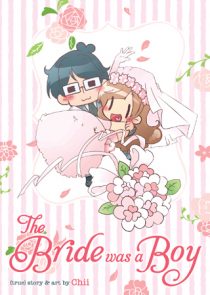 The Bride was a Boy
The Bride was a Boy
Chii | Seven Seas | 2016 | 1 (of 1)
Based on a true story, this informative and cute manga tells the story of the author Chii, her transition, and her relationship, engagement, and marriage to Husband-kun. It gives a lot of first-hand context as to what it’s like to be a transgender person in Japan, and goes over both the legal and cultural hurdles Japanese LBGT+ people have to deal with. Surprisingly, there isn’t much drama or angst, and in fact, her interactions with her future husband are outright adorable and highly relatable to anyone who has (or has had) a similarly happy relationship. The simple art style certainly helps amp the cuteness factor, and although the story is presented as a mix of standard comic-book storytelling, four-panel strips, and text segments to explain various terms, it is all very well organized and presented. The Bride was a Boy is a groundbreaking work that shouldn’t be missed.
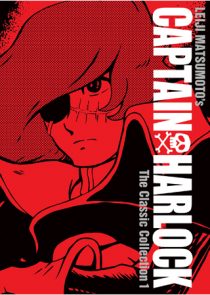 Captain Harlock
Captain Harlock
Leiji Matsumoto | Seven Seas | 1977 | approx. 3 (of 5)*
I’ve long had a soft spot for the works of Leiji Matsumoto, filled as they are with beautiful, wispy artwork and a romanticism for traveling the stars that’s unmatched by almost anything else. The story in Captain Harlock is fairly simple—a ragtag band of space pirates led by the title character pursue mysterious alien invaders—but the air that Matsumoto wraps his characters in is full of love and appreciation for the allure of setting off into the unknown. In addition to Harlock, the crew includes Daiba, a young man from Earth who joins up with them when the manga starts; the plastic model-obsessed First Mate Yattaran; the alien Mimay, whose outlook on life strongly aligns with her Captain’s; and several others. Together, they travel across vast stretches of black sky dotted with stars in a fastidiously detailed ship, the Arcadia, and plan for future encounters against their foes while reminiscing about the circumstances that brought them there. This is old-school space opera at its finest.
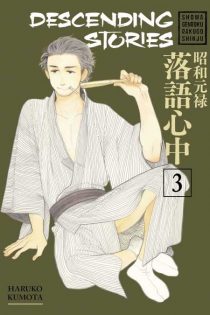 Descending Stories: Showa Genroku Rakugo Shinju
Descending Stories: Showa Genroku Rakugo Shinju
Haruko Kumota | Kodansha Comics | 2010 | 9 (of 10)
A josei manga about the Japanese storytelling art of rakugo is exactly the sort of thing that would’ve been a hard sell for English localization twenty years ago, but as manga’s Western readership has grown, so has the diversity of works that see publication. This tale centers around ex-con Yotaro, his rakugo master, Yakumo VIII, and Konatsu, the daughter of Yakumo’s late friend. This friend, Sukeroku II, was a popular rakugo performer who died tragically when Konatsu was young, and his death hangs heavy over the entire series. As Yotaro grows as a performer, so does Yakumo’s depression and guilt, but thanks to the efforts of the pair’s friends and fans, there does seem to be some hope for the latter. Rakugo itself is a key driver in the plot, not just in the traditional stories woven throughout the manga, but in how the characters internalize the art form for themselves. If you’re looking for a great drama, Descending Stories should be right up your alley.
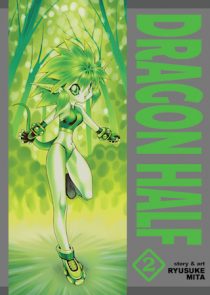 Dragon Half
Dragon Half
Ryusuke Mita | Seven Seas | 1988 | 4 (of 7)*
New licenses of classic manga, particularly series from the 1980s, are a rare thing these days, so this naturally went on my radar when it was announced. It is indeed very 80s, from the art style to the genre (non-isekai comedic fantasy with fanservice), and is all the more fabulous a time capsule for it. Half-dragon Mink and her friends embark on many hilarious quests—rescuing a mermaid, fighting in a martial arts tournament, and so on—while searching for a magic potion which will make her fully human, so that she can win the love of the dragon slayer Dick Saucer. For a comedy manga, the humor has held up well, with a few video game references being the main things which date the writing, and even then, not by much. So long as you don’t mind the cheesecake, this is a fun and funny manga with lovely old school art.
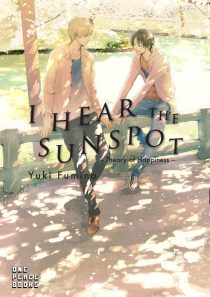 I Hear the Sunspot
I Hear the Sunspot
Yuki Fumino | One Peace Books | 2013 | 2 (of 3+)
College student Kohei is legally deaf, with limited hearing, which has led to him being a bit of a loner; he is particularly wary about receiving special treatment because of his disability. One day, he meets Taichi, a fellow student who is a bit more extroverted, and, more crucially, someone who is able to see past Kohei’s deafness to the person he really is. Their friendship doesn’t get off to a smooth start, but it eventually becomes something even greater. The detailed, delicate artwork is excellent and helps accentuate both Kohei’s quiet melancholy and Taichi’s evolving feelings toward his friend. One Peace has been publishing this series under three titles—the original, Theory of Happiness, and the ongoing Limit—but so far, while the first can be read as a complete story, they flow into each other naturally. A must-read for fans of BL manga, and worth a look for most everyone else.
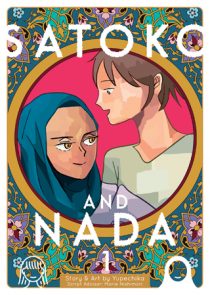 Satoko and Nada
Satoko and Nada
Yupechika & Marie Nishimori | Seven Seas | 2017 | 1 (of 4)
This four-panel comic series has two interesting things about it going in: the story is set in the United States, and one of the title characters is a Muslim woman from Saudi Arabia. The other title character, the Japanese Satoko, has just arrived in the US to attend college, and Nada is her new roommate. Satoko is new to both Muslim and American culture, and navigates both with Nada and other new friends in enlightening and entertaining ways. Here we learn about the different types of head coverings used in Mideast countries, how easy American cooking is compared to making Japanese and Saudi food, and much more. Satoko and Nada’s everyday adventures are funny and heartwarming, and I’m looking forward to spending more time with them and their friends.
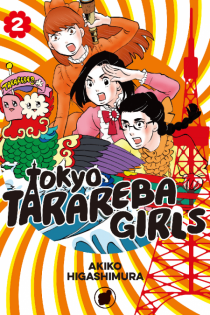 Tokyo Tarareba Girls
Tokyo Tarareba Girls
Akiko Higashimura | Kodansha Comics | 2014 | 3 (of 9)
If the name Akiko Higashimura sounds familiar, it might be because her Princess Jellyfish was featured in my 2016 selections. Tokyo Tarareba Girls is not on the same level, but is still a very funny and relatable bit of josei manga. Instead of a young woman in her late teens-early twenties, the protagonist this time, Rinko, is rapidly settling into middle age. Her two closest friends are as well, and none of them are married, which causes them all a great deal of anguish, leading them to vent their frustrations at each other while chugging beer in an izakaya. Their fates start to change with the arrival of Key, an arrogant young model with some issues of his own. Rinko and her pals are the types of characters one can’t help but root for, and I’ll be sticking with this series to the end to see if they find happiness, whether or not that involves marriage.
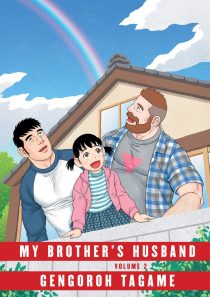 Third Place
Third Place
My Brother’s Husband
Gengoroh Tagame | Pantheon | 2014 | 4 (of 4)*
In my review from last year, I was quite impressed with the first half of My Brother’s Husband, the story of a Japanese single dad and the Canadian husband of his late twin brother. I am happy to report that the second half is just as good. Together, they form the story of said dad, Yaichi, confronting and overcoming his prejudices towards gay people. The widowed Mike is kind and patient toward Yaichi and his daughter Kana, who, in part because of her age, doesn’t view the Canadian newcomer as warily as does her dad. The art is outstanding, and the panels flow in such a way that’s more welcoming to Western readers than a lot of other manga, though still retains certain Japanese pacing conventions. This craftsmanship, coupled with a special and humane story, makes this series an easy recommendation for just about any comics reader.
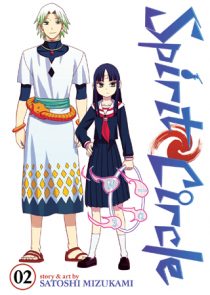 Second Place
Second Place
Spirit Circle
Satoshi Mizukami | Seven Seas | 2012 | 5 (of 6)
If I was ranking publishers as well as individual series, Seven Seas Entertainment (as evidenced by this entire post) would far and away be my top pick. In addition to their bread-and-butter fanservice titles like Monster Musume, they’ve been publishing all kinds of interesting works in recent years, and the best of these at the moment is Spirit Circle. This series shares some of the episodic, low-key nature of the mangaka’s previous Lucifer and the Biscuit Hammer, but both the plot and the storytelling itself are much stronger. In this tale, a middle schooler named Fuuta sets out to experience his past lives through the use of a magical device called a spirit circle, in part to find out why his beautiful classmate, Ishigami, wants to kill him. Each of Fuuta and Ishigami’s past lives are more interesting than those that came before, and they’re woven into the main story in a way that never seems forced. I hope that Seven Seas continues licensing Mizukami’s work, as it just keeps getting better.
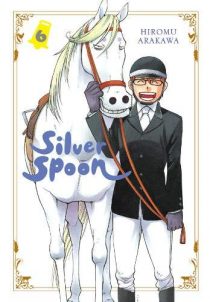 First Place: Manga of the Year
First Place: Manga of the Year
Silver Spoon
Hiromu Arakawa | Yen Press | 2011 | 6 (of 14+)
Fullmetal Alchemist is one of my favorite manga of all time, so when I first heard about the mangaka’s follow-up work, Silver Spoon, I held out hope for an official localization. It took years longer than many expected, but the wait was definitely worth it.
Silver Spoon is the story of Yuugo Hachiken, a city kid from Sapporo with a burning desire to succeed at school, which may or may not be related to a seemingly strained relationship with his parents. For various reasons, he applies to, and subsequently attends, Ooezo Agricultural High School’s Dairy Science program, where he finds himself surrounded by farm kids in a vastly different environment than what he’s been used to. There, he makes friends and learns firsthand just how difficult—and rewarding—a farmer’s life can be. His classmates and teachers are a diverse bunch, and many storylines burst with humor and positivity.
Matters of life and death weighed heavily in Fullmetal—and they do here as well, as part of farm work involves slaughtering animals—but Silver Spoon contains so much more. This is a manga not just about a different sort of high school experience, but also discovering one’s path in life, and learning what is truly important. Even if you have no interest in high school comedies or stories about farming, this series is well worth a try, and continues to get better with each new volume. Very highly recommended.